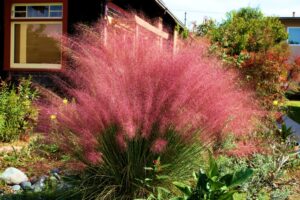Wood Chips: A Versatile and Sustainable Resource
Wood chips, derived from various tree species, have become an increasingly popular resource due to their versatile applications and sustainable nature. These small pieces of wood, typically obtained from logging operations or through the recycling of wood waste, have found their way into numerous industries and have proven to be a valuable material for a wide range of purposes. In this article, we will explore the various uses and benefits of wood chips, highlighting their positive impact on both the environment and the economy.
Subheading 2: Industrial Applications
Wood chips serve as a fundamental raw material in several industries, including pulp and paper, bioenergy, landscaping, and animal bedding. In the pulp and paper industry, wood chips are a primary ingredient used in the production of paper and cardboard. Their fibrous structure makes them an excellent source of cellulose, which is crucial for the papermaking process. Additionally, wood chips are widely utilized in the production of wood-based panels, such as particleboard, oriented strand board (OSB), and medium-density fiberboard (MDF), providing a sustainable alternative to traditional construction materials.
Subheading 3: Renewable Energy Source
Wood chips have emerged as an important feedstock for bioenergy production, playing a significant role in the renewable energy sector. They are used as a source of biomass for the generation of heat and electricity through processes like combustion, gasification, and pyrolysis. Biomass power plants often rely on wood chips as a sustainable fuel source, as they contribute to reducing greenhouse gas emissions and dependence on fossil fuels. By utilizing wood chips for bioenergy, we can promote a greener and more sustainable energy future.
Subheading 4: Landscaping and Gardening
Wood chips find extensive use in landscaping and gardening applications. They serve as an organic mulch, providing numerous benefits to plants and soil. Wood chips help retain soil moisture, suppress weed growth, and regulate soil temperature, thereby creating a favorable environment for plant growth. Moreover, they gradually break down, enriching the soil with organic matter and nutrients. Wood chips also contribute to erosion control by preventing soil erosion in sloped areas and acting as a protective layer around plants and trees.
Subheading 5: Environmental Benefits
The utilization of wood chips offers several environmental benefits. Firstly, they provide an efficient means of utilizing wood waste and by-products, reducing the amount of material sent to landfills. By recycling wood waste into wood chips, we minimize the release of methane, a potent greenhouse gas, from decomposing wood in landfills. Furthermore, using wood chips as a renewable energy source reduces the demand for non-renewable fossil fuels and helps mitigate climate change by reducing carbon dioxide emissions. The sustainable management of forests to produce wood chips also promotes healthy ecosystems and supports biodiversity conservation.
Subheading 6: Economic Considerations
Wood chips contribute to economic growth and job creation in the forestry and related industries. Their production and utilization create employment opportunities, especially in rural areas with abundant forest resources. Wood chip exports can also serve as a source of revenue for countries with significant forest cover, stimulating their economies. Moreover, the availability of wood chips as a cost-effective raw material benefits various industries, such as construction, pulp and paper, and bioenergy, making their operations more economically viable.
Subheading 7: Conclusion
Wood chips have proven to be a valuable and versatile resource, finding applications in diverse industries and sectors. With their sustainable sourcing, wood chips offer an environmentally friendly alternative to non-renewable materials, contributing to the reduction of greenhouse gas emissions and the conservation of natural resources. Their versatility and economic benefits make them an attractive option for various industrial processes and fuel sources. By embracing wood chips as a renewable and eco-friendly material, we can
This article is provided by https://www.ibiza24.eu/wood-chips





